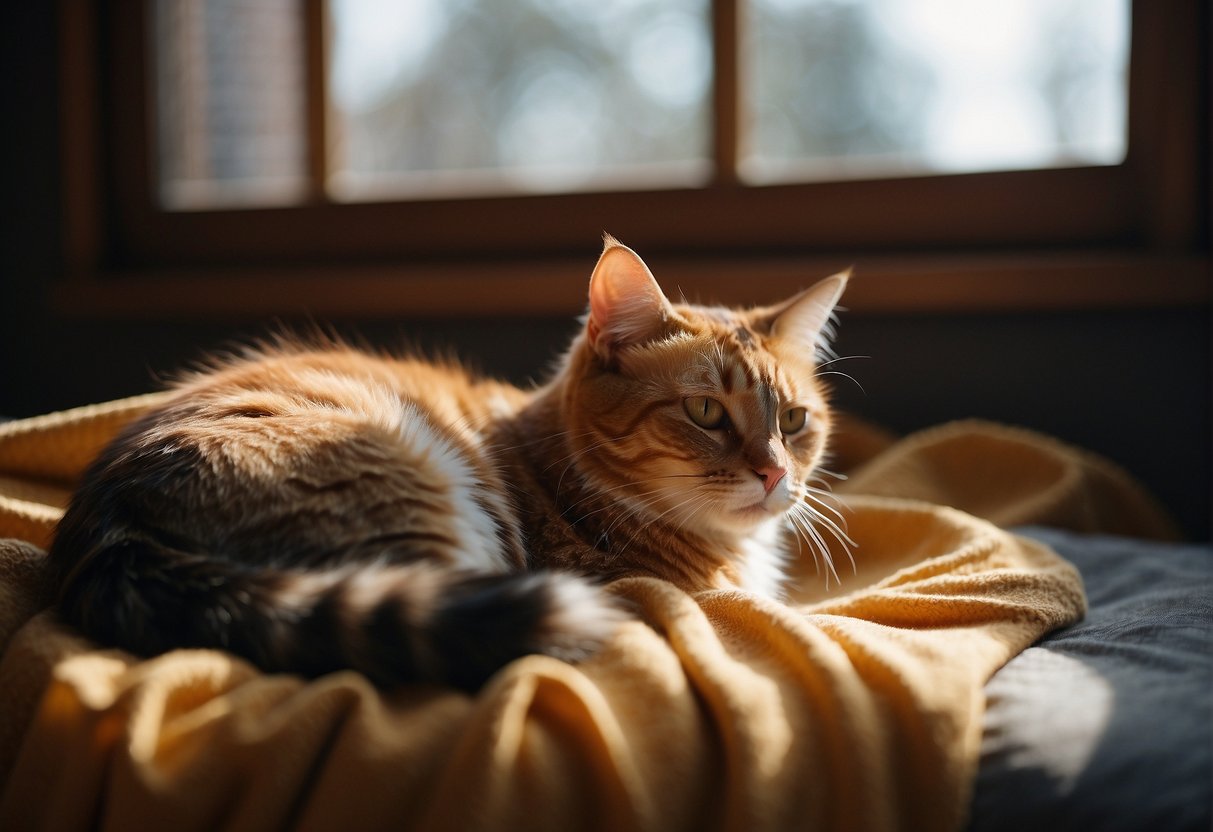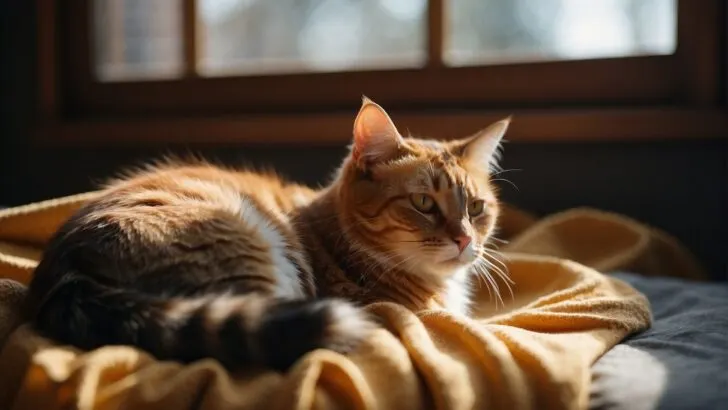When your cat is purring nonstop, it’s often a sign that they’re expressing their contentment and comfort to you – it’s their way of communicating a cozy state of mind, especially when they’re cuddled up on your lap after a long day.
However, it’s important to recognize that cats can also purr when they’re in distress, as this behavior is a method for them to soothe themselves, similar to a child sucking their thumb.

It’s fascinating to observe how your cat’s purrs can vary in response to different situations. For example, you might notice that the rhythm and tone of the purr change when your cat is seeking attention, asking for meals, or even when they’re healing from an injury.
Cats can have a specific ‘solicitation purr,’ which is hard to ignore and often successfully earns them what they desire, whether it’s a stroke of affection or their favorite treat.
Dealing With Cats Who Won’t Stop Purring

Sometimes you might notice your feline friend purring more often than not. While this can be a sign of a content and happy cat, understanding why they purr incessantly can help ensure your pet is both healthy and happy.
Reasons for Purring
Contentment: The most well-known reason for purring is happiness. When your cat is curled up in the sunlight or on your lap, this soothing vibrational sound is a sign they feel safe and loved.
Soothing Mechanism: Cats may purr to calm themselves in stressful situations. It’s a self-soothing behavior that can help them deal with anxiety or a new environment.
Signaling a Need: Sometimes referred to as a “solicitation purr,” this sound might be combined with a higher-pitched meow when your cat is hungry or wants attention.
Pain: Just as purring can soothe stress, it’s also a method for cats to comfort themselves when in physical pain. If your cat’s purring seems excessive, it could be worth a vet visit to rule out discomfort.
Healing Properties: Purring frequencies have been associated with healing. These sound waves can promote bone density and healing, making it a possible response to injury.
Anatomy of Purring: When curious about how cats purr, know that it involves rapid movements of the muscle within their larynx. Coupled with a neural oscillator, cats can control the diaphragm and glottis to create this unique vocalization.
Social and Emotional Aspects of Purring
Purring serves many social and emotional purposes for cats, reinforcing bonds with their owners and providing comfort in various situations.
Bonding and Affection
From the earliest moments of a kitten’s life, purring is a fundamental part of developing a bond with its mother. Mother cats often purr during nursing, which not only soothes the kittens but also reinforces nurturing instincts and the mutual feeling of contentment.
As the kittens grow, this behavior is extended to humans. When your cat purrs while being petted or held, it reflects a deep sense of affection and trust. It’s their way of showing love and forging a bond with you, akin to a hug or a warm embrace in human terms.
Bonding through purring:
- Kittens: innate response to mother’s purr, promotes bonding
- Adult cats: use purring to express trust and pleasure to their human companions
Comfort and Self-Soothing
Beyond bonding, cats use purring as a way to calm themselves down and cope with various emotions or situations. Think of purring as a cat’s method of self-medication; it can be a sign of relaxation in a tranquil environment or a way for them to deal with anxiety.
This coping mechanism can also signify self-soothing during stressful times or when they’re not feeling well. For example, when introduced to a new environment, you may notice your cat purring more as they try to relax and acclimate to their surroundings.
Why cats self-soothe by purring:
- Relaxation: creates a state of calm in a peaceful setting
- Anxiety: acts as a tool to reduce stress or discomfort
- Coping mechanism: aids in managing pain or agitation
Physical and Health Related Aspects of Purring
When your cat purrs, it’s not just an expression of contentment; there are also physical and health-related reasons behind this soothing vibration.
Purring for Healing and Pain Management
Cats have a powerful ability to self-medicate and heal through purring. This isn’t just an old cat tale; studies show that the vibrations produced during purring have therapeutic benefits, including:
- Healing Properties: Purring frequencies (between 25 and 150 Hertz) can stimulate the healing of bones and tissues.
- Reducing Swelling: The vibrations may help to reduce swelling and inflammation (edema).
- Pain Relief: Purring releases endorphins, which can ease pain naturally, a handy trait when your cat is recovering from an injury or dealing with strains.
Cats can often be seen comfortably purring when injured, and though it might seem like they’re just taking their situation in stride, they’re likely using their purrs to help promote their own recovery.
Signs of Distress in Purring
Although purring is often soothing, it’s essential to recognize when this behavior might indicate distress:
- Lethargy or Limping: If your cat’s purring is paired with a lack of energy or difficulty moving, they may be injured or in pain.
- Abnormal Behaviors: Purring that comes alongside unusual behavior such as hiding or aggression might mean your cat is stressed or feeling unwell.
- Other Health Signs: If your feline friend is purring nonstop and showing signs of diarrhea, limping, or not eating, a vet visit is in order to rule out health issues.

My name is James, and welcome to FAQCats!
Along with our team of cat owners, expert pet enthusiasts, and pet professionals, we aim to write engaging helpful, engaging content about cats. At FAQCats we strive to provide content that’s accurate and fun to read. Our team writes about everything related to cats; even the most complex of topics. Through extensive research and caring for our own fur-pals, we’re able to provide something cat owners worldwide will love. Have a look around, and leave us feedback anytime!

